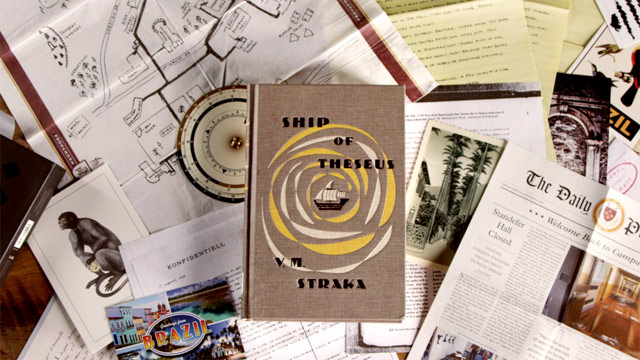Two weeks ago I posted about story sales in 2013 and tried to address some issues about the number of submissions that we writers make to short fiction markets. What I didn't address was the number of
rejections I received for the stories I submitted in 2013. Counting those up is always about as enjoyable as eating a live frog with blue cheese and anchovies, but I did it--and discovered that I was given a thumbs-down 14 times last year. That's a lot.
We always hear and read about the fact that rejections are to be expected and not dreaded, and that writers have to learn not to dwell on them. Well, that advice may be true, but--as with most other pieces of advice--it's easier given than followed. Nobody likes to be rejected, whether the subject is manuscripts or salary increases or dates to the prom.
War stories
Allow me to digress a moment. Years ago, when I hired on with IBM, I went through an eighteen-month training period during which I--like all sales and systems-engineering rookies--shuttled back and forth between my local branch office and classroom courses at various IBM education centers across the country. In my case, I first spent a month at the branch office; then a month in class in San Jose, California; several more months in my home branch; two months in class in downtown Los Angeles; several more months back home; two more months in class in L.A.; several
more months at home; and finally a month in class in Endicott, New York, to end my year-and-a-half. The time at the local office was always spent getting field experience and studying for the next trip to a course location, and the courses themselves were a marathon of lectures, case studies, presentations, and eighteen-hour days that made me wish I was back in military boot camp.

My point (there is a point here, believe it or not) is that those ed-center classes served a second purpose: they thinned the herd. On the morning of the first day of every course, we newly-arrived students were given an entrance exam covering the material that we'd studied for the past few months, and those who didn't pass were quietly approached during lunch, kicked out of the class, and flown back home at the expense of their branch. The rumor, and this was never verified, was that anyone who failed one of those exams never continued with the company. I do know that I stayed with IBM for thirty years and I never once saw any of those folks again.
That, my friends, is rejection. To me, it's on a par with being abandoned in your wedding dress at the altar, or turned down for a loan by the last bank in town. And though no one knew it back then, similar fates would await some of those who went through the widespread downsizing of the national workforce twenty years later, when so many large companies "restructured." Those were grim times. We used to joke (miserably) that the motto in Corporate America in the 1990s was "Beheadings will continue until morale improves."
On a lesser scale…

I realize I'm being a little extreme, here.
Literary rejection, although certainly unpleasant, doesn't compare to any of that. The rejection of a story or novel manuscript is not only a rite of passage for new writers, it can be a regular occurrence to many fiction authors throughout their careers. Lawrence Block once said that rejection letters are membership cards to the universal fellowship of writers. But they're still no fun.
In a 2012 piece for
Glimmer Train, author Katherine Ryan Hyde (who wrote
Pay It Forward and many other novels) revealed that she was rejected 122 times before her first story sale, but was able to put it into the correct perspective. I especially liked one of her observations: "I think the most damaging misconception about rejection is that your work has been judged as 'bad.' . . . In reality, you don't know how it was received."
The following are some of her suggested (and paraphrased) reasons that an editor might have for rejecting a short story:
1.
I just didn't like it.
2.
I liked it but I didn't love it.
3.
It was good, but suited to a different type of publication.
4.
I short-listed eight stories and had space for only four.
5.
I liked it but couldn't sell the other editors on it.
Good reasons. And there are probably many more, including "we ran a story similar to it last month," or "it's a bit too long," or "my back hurts, and I didn't get enough sleep last night." As Ms. Hyde mentioned, there's usually just no way to know the reason a story got rejected, and it does no good to worry about it. One point, though: if you've already sold a lot of stories to a particular editor, he or she will sometimes come right out and tell you why a story didn't make the cut. I know for sure that some of my stories have failed because of reason number 5, above. If the editor-in-chief vetoes it, it doesn't matter how many lesser editors okayed it. Does that knowledge make me feel any better, or make it any easier to make a sale to that market in the future? Not really. But, again, it's important to remember that not all rejected stores were rejected because they were poorly written.
Do you recall how many rejections you received (novel, short story, nonfiction) before the publication of your first work? Did you at any point find yourself discouraged or frustrated? Did you ever come close to quitting? I think all writers suffer some measure of self-doubt, and a long run of rejections is a frequent cause.
To paint all this in an brighter light,
Consider the following:
- Grisham's
A Time to Kill was rejected by 16 agents and 12 publishers.
- 12 publishers rejected J. K. Rowling's first
Harry Potter novel.
- 20 publishers turned down Thor Heyerdahl's
Kon-Tiki and William Paul Young's
The Shack.
- 21 publishers rejected Richard Hooker's
M*A*S*H.
-
Catch-22 was bought on its (?) 22nd try.
- 23 publishers rejected Frank Herbert's
Dune.
- 24 agents turned down
The Notebook (Nicholas Sparks). A week after the 25th accepted it, it sold to Time-Warner for a million dollars.
-
Carrie got 30 rejections.
-
Gone With the Wind got 38.
-
The Cat in the Hat got 46.
- Stephen King's early short story "The Glass Floor" received 60 rejections, before selling for $35.
- 60 agents rejected Kathryn Stockett's
The Help. The 61st accepted it, and it was sold three weeks later.
And the REALLY big numbers . . .
- The
Chicken Soup for the Soul series was rejected 140 times
- Louis L'Amour was rejected 200 times before Bantam published his work.
- It took Alex Haley eight years and 200 rejections to sell
Roots.
- F. Scott Fitzgerald is said to have received more than 300 rejections before he sold a story, and Jack London received 600.
- John Creasey, the world's most prolific crime writer, wrote his first published novel on the backs of 743 rejection letters.
So the next time you get one of those cold, prissy little notes that says "We regret that your submission does not meet our requirements" (which, for me, will probably be tomorrow), go ahead and say a dirty word. I do. But remember this:
You're in pretty good company.


















 No, not that one, this one:
No, not that one, this one: 










 As 2013 ends and 2014 begins, I'm finding myself in a somewhat melancholy mood. Maybe even a bit vulnerable, tinged with sadness. The 29th of December is the eighth anniversary of the day my whole world changed. My husband, Elmer Grape, my first reader, my love and best friend of almost thirty nine years died.
As 2013 ends and 2014 begins, I'm finding myself in a somewhat melancholy mood. Maybe even a bit vulnerable, tinged with sadness. The 29th of December is the eighth anniversary of the day my whole world changed. My husband, Elmer Grape, my first reader, my love and best friend of almost thirty nine years died.










